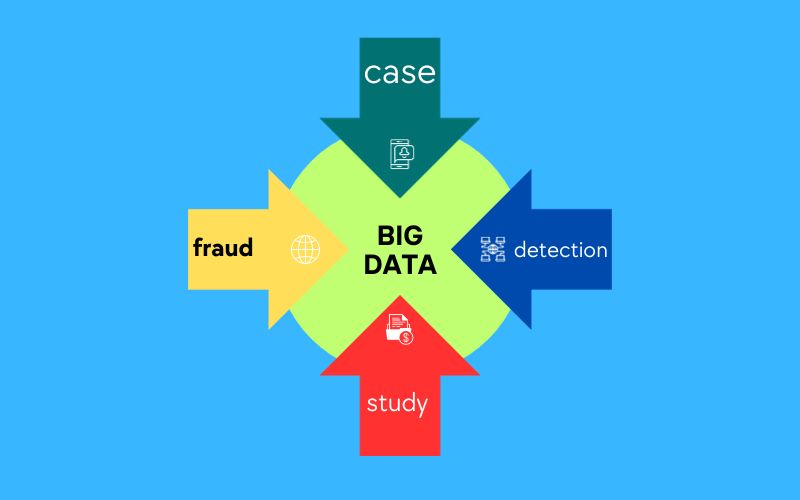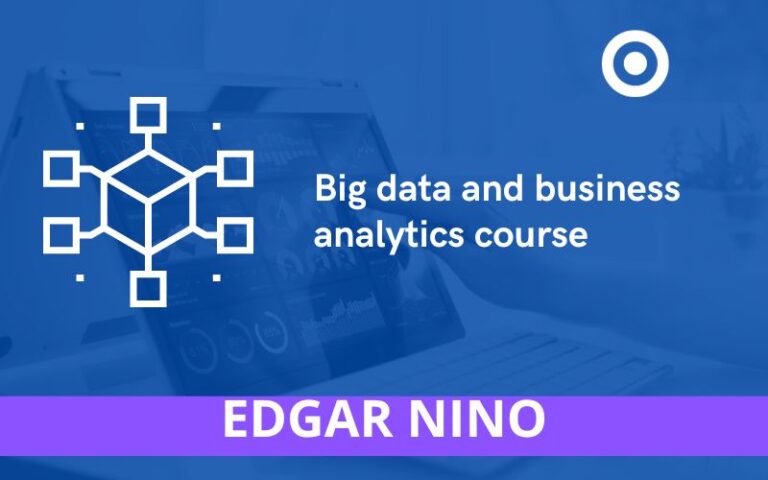Big data fraud detection case study
In the vast world of healthcare, integrity and transparency are essential to ensure trust and efficiency in the system. However, like in many sectors, healthcare is not free from challenges, with fraud being one of the most critical and costly. Detecting fraud, especially in medical insurance claims, is a complex task that requires precision and a deep understanding of anomalous patterns and behaviors. In this context, Big data fraud detection case study emerges as a revolutionary tool, showcased in our case study, capable of transforming the way organizations approach and combat fraud. The purpose of this analysis is to delve into how an advanced analytics solution, implemented by Datamatics, has influenced the identification and prevention of fraudulent activities for a leading healthcare giant. Through this big data fraud detection case study, we will examine the techniques and methodologies used, and how, under certain circumstances, these tools have proven to be essential in safeguarding the financial and operational integrity of health institutions.
Importance of Fraud Detection in the Healthcare Sector
In the global realm of healthcare, fraud detection has become an essential priority. Healthcare institutions constantly face the challenge of ensuring that resources are used appropriately and that claims are legitimate. Big data fraud detection case study not only represent significant financial losses but can also compromise the quality of care provided to patients. Therefore, it’s imperative that healthcare systems are equipped with efficient mechanisms to identify and prevent fraudulent activities.
Benefits of Effective Detection
Early and effective Big data fraud detection case study detection in the healthcare sector brings multiple benefits. Firstly, it ensures that funds allocated for medical care are used appropriately, thus maximizing the positive impact on the population’s health. Secondly, by reducing the number of fraudulent claims, institutions can focus their efforts and resources on improving the quality and efficiency of the services they offer. Detecting fraud in health care through emerging technologies provides a deeper insight into this aspect.
Advanced Analytics as a Powerful Tool
Technology has played a pivotal role in the evolution of fraud detection. In this context, advanced analytics stands out as an innovative solution that has transformed how organizations tackle this challenge.
Features and Advantages of Advanced Analytics
Advanced analytics employs algorithms and predictive models to analyze large volumes of data and detect anomalous patterns. These tools not only allow for real-time Big data fraud detection case study identification but can also predict potential fraudulent activities in the future. Moreover, by integrating data from various sources, advanced analytics offers a more comprehensive and accurate view of operations, allowing institutions to make informed and proactive decisions in the fight against fraud. Lastly, from a sociological perspective, the adoption of these technologies reinforces public trust in the healthcare system, demonstrating an ongoing commitment to integrity and transparency. For further reading on this topic, Healthcare Fraud Data Mining Methods: A Look Back and Forward offers valuable insights.
Presentation of the Client
Healthcare is a field that encompasses a wide range of services aimed at improving the health and well-being of individuals. Within this vast domain, there are organizations that stand out for their excellence and commitment to quality. One such entity is the healthcare giant, recognized not only for its magnitude but also for its unwavering dedication to providing top-tier health services. 5 Current Issues in Health Care and What Administrators Should Know provides a deeper insight into the challenges faced by such organizations.
Challenges Faced
Within the daily operations of any health organization, there are inherent challenges that must be addressed with diligence and precision. For our leading client in the sector, issues of fraud, abuse, and waste in medical insurance claims have been particularly concerning. These irregularities not only represent a diversion of valuable resources but also erode public trust in the health system. The repetition of such problems can lead to questions about the integrity and efficacy of the organization. A detailed exploration of Six challenges to delivering quality healthcare can shed light on these concerns.
Financial and Operational Impact
The impact of these irregularities goes beyond the merely financial. While it’s true that fraud and abuse can result in significant monetary losses, the operational damage is equally severe. Daily operations are affected, processes become less efficient, and the institution’s reputation may be compromised. In a field as crucial as healthcare, where trust and credibility are paramount, the effects of such problems can be lasting and detrimental. It’s therefore imperative to address these challenges with robust and effective solutions. Major Challenges Facing the Healthcare Industry Today offers valuable insights into these challenges and potential solutions.
Implementation of an Advanced Analytics Solution
Firstly, reference will be made to previous solutions in the field of advanced analytics and how these have been applied in different sectors. Then, details will be provided on how Datamatics introduced an innovative advanced analytics solution, highlighting its unique features and how it differs from previous proposals. Finally, the impact and relevance of this implementation in the field of fraud detection and data-driven decision-making will be discussed.
Data Mining Techniques in Fraud Detection
Firstly, traditional data mining techniques will be addressed and how these have been used to identify patterns and trends in large datasets. Then, it will be explained how these techniques have been adapted and optimized specifically for detecting fraud patterns, highlighting the most effective methodologies and tools. Finally, the importance of these techniques in the current context, where fraud has become more sophisticated and harder to detect, will be discussed.
Data Integration for a Comprehensive View
Firstly, the importance of having a holistic view of data in any analytical process will be discussed. Then, details will be provided on how integrating data from multiple sources can enrich this view, offering a more comprehensive and detailed perspective on operations and activities. Finally, the discussion will focus on how this integration can be key to identifying and preventing frauds, by providing a clearer picture of transactions and anomalous behaviors.
Visualization Tools in Fraud Detection
In the realm of data analysis, visualization tools such as Tableau, Power BI, and D3.js have revolutionized the way organizations interpret and understand large datasets. These tools transform raw data into comprehensible graphical representations, like charts, heat maps, and diagrams, making it easier to spot irregularities or anomalous behaviors that might indicate fraudulent activities. Fraud detection tool & data visualization essentials provides a deeper insight into the importance of these tools.
Predictive Models in Fraud Prevention
The use of specialized software, such as SAS, Python (specifically with libraries like Scikit-learn), and R, has enabled the development of predictive models that can anticipate potential frauds before they happen. These models employ algorithms and statistical techniques to analyze historical data and, based on that information, predict future behaviors. ATOVis – A visualisation tool for the detection of financial fraud offers a comprehensive look at the role of these models.
Machine Learning Techniques for Accurate Detection
Machine learning, implemented through platforms like TensorFlow, Keras, and PyTorch, has proven to be essential in enhancing the accuracy of fraud detection. These techniques allow systems to adapt and learn from new data, continually improving their ability to spot suspicious activities. As more data is processed, the system becomes more accurate, ensuring more reliable and effective detection. Data visualization for fraud detection: Practice implications delves deeper into the significance of these techniques.
Impact of Advanced Fraud Detection
Fraud detection is a discipline that encompasses a wide range of techniques and tools aimed at protecting the financial assets of organizations. One of the main outcomes of implementing advanced detection systems is the significant reduction in the number of fraudulent claims. This decrease not only represents a victory in terms of security but also reflects the effectiveness of the tools and processes implemented.
Financial Savings for Organizations
In addition to direct protection against fraudulent activities, another tangible benefit is financial savings. Fraudulent claims, when undetected, can result in significant monetary losses for companies. By reducing the number of these claims, organizations not only prevent losses but can also redistribute those resources towards areas that generate value and growth. It’s evident that the investment in advanced detection systems yields a positive return in financial terms.
Operational Efficiency and Customer Satisfaction
Finally, beyond the financial benefits, the implementation of robust fraud detection systems leads to an improvement in operational efficiency. By reducing the time and resources dedicated to managing fraudulent claims, organizations can focus on enhancing other aspects of their operation. Moreover, by ensuring transactions are secure and legitimate, customer satisfaction and trust increase, strengthening the relationship between the company and its users.
Advanced Analytics in the Healthcare Sector
Advanced analytics is a tool that has gained prominence across various sectors, and healthcare is no exception. Its ability to process and analyze vast amounts of data makes it a differentiating tool, especially when identifying patterns and trends that might not be immediately obvious. Improving Health Care with Advanced Analytics provides a deeper insight into this topic.
Advantages of Data Mining and Machine Learning
Within advanced analytics, techniques such as data mining and machine learning have proven to be particularly beneficial. These techniques allow healthcare organizations to identify potential frauds, anomalies, and behavioral patterns that might indicate issues or areas for improvement. Moreover, by automating many of these processes, organizations can act swiftly, optimizing resources and enhancing patient care. Advanced Analytics Americas | Healthcare offers a comprehensive view of these techniques.
Reflections on Adopting Advanced Technologies
Adopting advanced technologies in the healthcare sector is not just about efficiency but also responsibility. With tools that allow for quicker detection and response, the quality of service improves, ensuring safer care for patients. It’s vital for healthcare organizations to recognize the importance of these tools and integrate them into their daily operations. Advanced Analytics: an Essential Tool for Value-Based Care Success delves deeper into the significance of these technologies.
Looking Forward
As technology continues to advance, it’s likely we’ll see even more implementations and improvements in the realm of advanced analytics in healthcare. From more accurate algorithms to more intuitive visualization tools, the future promises to be exciting, filled with innovations benefiting both healthcare providers and patients. It’s crucial for organizations to stay abreast of these trends and consider how they can integrate them to continue offering excellent service.
Conclusion
In essence, advanced analytics is not merely a technical tool but a transformative pillar in the healthcare sector. Throughout this analysis, we’ve underscored the capability of these technologies to identify patterns, prevent fraud, and enhance operational efficiency. We’ve observed how these tools not only offer tangible benefits in financial terms but also strengthen the relationship between healthcare organizations and their patients. However, it’s crucial to delve further into the possibilities and future adaptations, especially in emerging areas and at the intersection with other medical disciplines.


